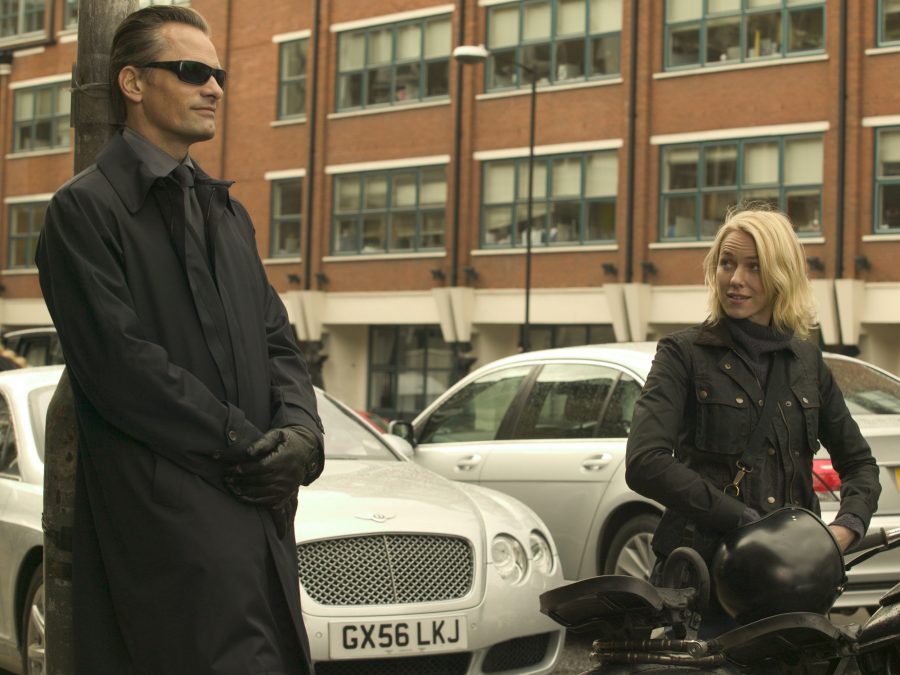Combining writer/director David Cronenberg’s penchant for body horror with questions around justified violence and secretive subcultures, Eastern Promises offers an unflinching glimpse into the seedy underbelly of London’s Russian mafia.
After a pregnant teenager dies while giving birth, British-Russian midwife Anna (Naomi Watts) goes in search of her family, but soon discovers that the girl had been trafficked to the UK by the Russian mafia and forced to work as prostitute. Looking for answers, she meets the enigmatic chauffeur Nikolai (Viggo Mortensen) who works for the very people she is looking into.
Hidden, microcosmic societies existing on the edges of a city is a theme that screenwriter Steven Knight has revisited throughout his career. If Dirty Pretty Things followed undocumented immigrants working in London and Peaky Blinders is a crime saga about a gang in early 20th century Birmingham, Eastern Promises acts as the link that binds them.
Eastern Promises has been described as a “character-driven crime thriller”, delving into the interiors of its characters in ways that reach beyond simple plot mechanics. Identity and the understanding of the self are explored from multiple angles throughout the film. Anna, whose deceased father was Russian, is forced to confront the parts of her national identity that have been lost; Kiril (Vincent Cassel, leaving everything on the table) disguises his struggles with his sexuality with displays of hyper-masculinity that never fully ring true. At the heart of the film, these inner conflicts are left open to manipulation by those who wish to gain power – for better or worse.

It is Eastern Promises’ grounding in the strict and codified world of the vory vs zakone (literally “thieves in law”) that sets it apart from other gangster films – even those about the Russian mafia. Tattoos were referenced in the script but it was Mortensen’s involvement that elevated them to a central plot point; in his research for the role he travelled to the Ural region in Russia, spent time with “unsavoury” characters, and delved into the complex and highly specific world of tattoos.
One of the film’s solely Russian language scenes is an evisceration of Nikolai by the “godfathers” of the vory vs zakone – acting as an alternative prison record, they allow for a person’s life to be understood through the marks on their bodies. The trust that exists between Cronenberg and Mortensen allows for this forensic characterisation, and the understanding that underpins so much of the actor’s physical transformation is what sustains much of the film’s intrigue and weight.
There is an ingrained grittiness to Eastern Promises. There are no vistas of London here; no landmarks, only a brief shot of a motorbike crossing Southwark Bridge. Instead, the action takes place in the cracks of the city: deserted, dilapidated social clubs; the quiet alleys that lead suddenly to the drop of the river; a crowded fast food restaurant with plastic tables. It is the Thames Barrier, not Tower Bridge, that looms in the background as a bloated body is pulled from the river.
The violence, when it comes, is unsparing. Pliers snip through the fingers of a frozen corpse, a young man’s throat is slit in a graveyard, but it is the central fight scene that lingers. Nikolai, set up to take the fall for an assassination, is attacked by two men in a bathhouse. He is unarmed and undressed except for a towel around his shoulders; they brandish curved knives, with the added protection of leather jackets. The scene itself is only three and a half minutes long, but every aching, desperate second stretches for an eternity.
Shot over two days in a replica of Islington’s Ironmongers Row Baths, the fight is achingly brutal. There are no easy getaways, no superficial injuries – every blow, every cut is visceral. Shoes squeak against tiles slick with water and blood, characters stumble, and the desperation in every movement. In an interview, fight choreographer Julian Spencer discussed how, while the fight was carefully choreographed, to avoid it becoming staged the actors were able to “let the characters’ physical strengths come out”.
Towards the end of the scene this physicality of Mortensen comes to the fore. Nikolai drags his beaten body across the room, limbs imp with exhaustion, pulling himself over a small wall. Head bowed and arms contorted as he searches for the strength to, finally, overpower his attacker, it is Mortensen’s performance which makes the toll of the fight palpable. Chest heaving, he scrabbles for the knife before forcing the man’s head back onto the blade and it is only once the last man is dead that he collapses to the floor.
There is no doubting the power of this scene. There’s a vulnerability that comes with appearing naked on screen – to do so for an exposing, extended fight scene is something else entirely. Eastern Promises isn’t a film about the glamorous lifestyle afforded by those in power, but rather the violence that sustains them. Cronenberg dives head first into this microcosm of mob life, and the film’s journey into this specific strata of London’s criminal underworld still has the power to shock and enthral.
The post In Praise of Eastern Promises appeared first on Little White Lies.



0 Comments